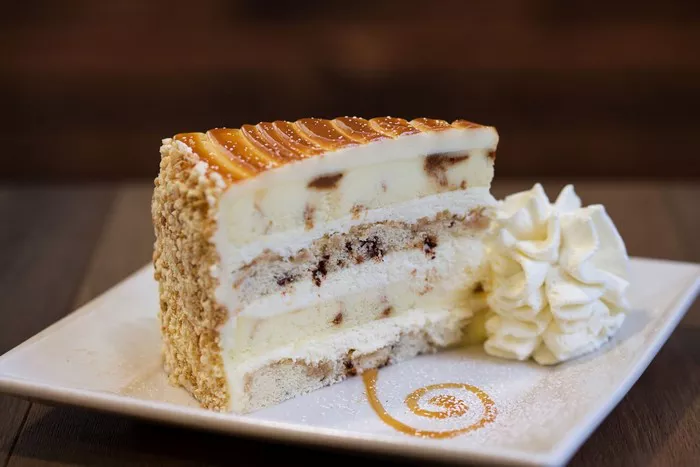When it comes to British desserts, the custard tart holds a special place as a beloved and timeless delicacy. This delectable pastry, also known as the “egg custard tart” or “custard pie,” has been a part of British culinary tradition for centuries. With its smooth, creamy custard filling nestled in a flaky pastry crust, the British custard tart tantalizes taste buds and evokes a sense of nostalgia for both locals and visitors alike. In this article, we delve into the world of the British custard tart, exploring its history, ingredients, preparation, and the cherished place it holds in British patisserie.
The History of the British Custard Tart
The origins of the British custard tart can be traced back to medieval times, making it a dessert with a rich and storied history. Custard, a sweetened mixture of milk and eggs, was already popular in ancient European cuisines, but it wasn’t until the Middle Ages that the idea of combining custard with pastry emerged.
During this period, recipes for custard tarts started to appear in cookbooks, showcasing variations of the filling that included spices such as saffron and ginger. Over the centuries, the custard tart evolved, and by the 16th and 17th centuries, it had become a popular dessert among the upper classes in England.
The Ingredients of the British Custard Tart
The British custard tart boasts a simple yet delightful combination of ingredients:
1. Pastry Crust: The foundation of the custard tart is a flaky and buttery pastry crust. Traditional recipes call for shortcrust pastry, a combination of flour, butter, sugar, and sometimes eggs, creating a tender and crumbly crust that complements the smooth custard filling.
2. Custard Filling: At the heart of the custard tart lies the silky custard filling. It is made by combining milk, eggs, sugar, and vanilla or other flavorings. The mixture is then gently baked in the pastry shell until the custard sets to a creamy consistency.
3. Flavorings: While the classic custard tart uses vanilla as the primary flavoring, variations abound. Some recipes incorporate lemon zest for a zesty twist, while others infuse the custard with nutmeg or cinnamon to add a warm and aromatic touch.
The Preparation of the British Custard Tart
Creating a traditional British custard tart is a labor of love, requiring precision and attention to detail to achieve the perfect balance of flavors and textures. Here’s a step-by-step guide to preparing this delightful dessert:
1. Prepare the Pastry Crust: Begin by making the pastry crust. Combine flour, butter, sugar, and a pinch of salt in a bowl. Use your fingertips to rub the butter into the flour until the mixture resembles breadcrumbs. Add cold water gradually and mix until the dough comes together. Wrap the dough in plastic wrap and refrigerate for at least 30 minutes to allow it to rest and chill.
2. Roll out the Pastry: Once the dough has rested, roll it out on a floured surface to the desired thickness. Carefully transfer the rolled-out pastry to a greased tart or pie dish, ensuring it covers the base and sides evenly.
3. Pre-bake the Pastry: To prevent a soggy bottom, pre-bake the pastry crust before adding the custard filling. Line the pastry with parchment paper and fill it with baking beans or dried rice. Bake the crust in a preheated oven for about 15 minutes, then remove the parchment paper and beans and bake for an additional 5 minutes to ensure the crust is golden and crisp.
4. Prepare the Custard Filling: While the pastry bakes, prepare the custard filling. Heat milk in a saucepan until it is just about to simmer. In a separate bowl, whisk together eggs, sugar, and flavorings until well combined. Gradually pour the hot milk into the egg mixture, whisking constantly to prevent curdling.
5. Assemble and Bake: Pour the custard filling into the pre-baked pastry shell. Sprinkle the top with a pinch of nutmeg or cinnamon, if desired. Bake the tart in the oven at a moderate temperature until the custard is just set but still slightly wobbly in the center. The residual heat will continue to cook the custard as it cools.
6. Serve and Enjoy: Once the custard tart has cooled, it is ready to be served. Traditionally, custard tarts are served at room temperature, allowing the flavors to meld and the custard to reach its ideal consistency.
The Cherished Place of the British Custard Tart
The British custard tart holds a cherished place in British patisserie and culinary culture. It is often associated with traditional tea time, where it can be found gracing the shelves of quaint tearooms and cafes across the country. The custard tart is also a popular treat during festive occasions, family gatherings, and celebratory events.
In addition to being a beloved dessert in British households, the custard tart has also made its way into British literature and pop culture. It is referenced in various literary works, including the writings of Charles Dickens and Jane Austen, further solidifying its status as a classic British delicacy.
Regional Variations of the Custard Tart
While the classic British custard tart reigns supreme, regional variations add delightful twists to this traditional dessert. In Portugal, the “Pastel de Nata” is a close cousin of the custard tart, featuring a flaky pastry filled with a creamy custard infused with hints of cinnamon and lemon.
In Hong Kong, the “dan tat” is a popular dessert that draws inspiration from the custard tart. The Hong Kong version features a slightly different filling, combining egg custard with evaporated milk for a creamier and richer texture.
Conclusion
The British custard tart is more than just a dessert; it is a delicious slice of British culinary heritage. Its centuries-old history, simple yet delightful ingredients, and the art of preparing the perfect custard filling have solidified its place as a classic and beloved delicacy. With its smooth and creamy custard nestled in a flaky pastry crust, the custard tart continues to tantalize taste buds and evoke a sense of nostalgia for both locals and visitors alike. Whether enjoyed during traditional tea time or as a sweet treat at festive occasions, the British custard tart is a timeless and treasured part of British patisserie, enriching the culinary tapestry of the nation and leaving a lasting impression on those fortunate enough to savor its delectable flavor.















